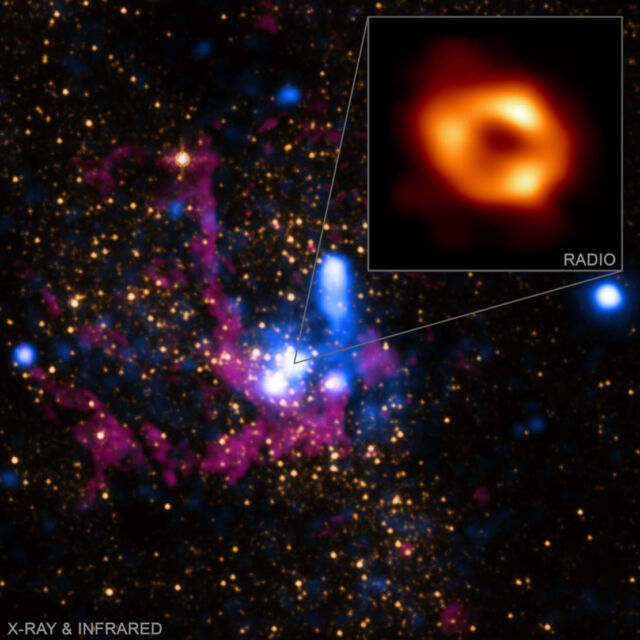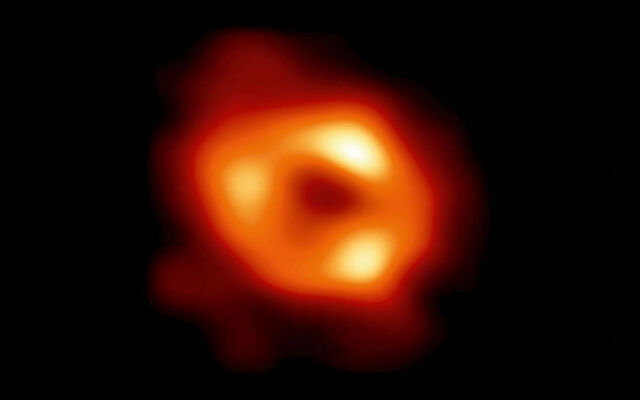Astronomers have unveiled the first image of the supermassive black hole at the centre of our own Milky Way galaxy.
Astronomers revealed the above black hole image at simultaneous press conferences around the world, including at the European Southern Observatory (ESO) headquarters in Germany,
The image was produced by a global research team called the Event Horizon Telescope (EHT) Collaboration, using observations from a worldwide network of radio telescopes.
This result provides overwhelming evidence that the object is indeed a black hole and yields valuable clues about the workings of such giants, which are thought to reside at the centre of most galaxies.
The image is a long-anticipated look at the massive object that sits at the very centre of our galaxy. Scientists had previously seen stars orbiting around something invisible, compact, and very massive at the centre of the Milky Way. This strongly suggested that this object — known as Sagittarius A* (Sgr A*, pronounced “sadge-ay-star”) — is a black hole, and today’s image provides the first direct visual evidence of it.

Stars are observed to orbit a very massive and compact object there known as Sgr A* (say “sadge-ay-star”). But this just released radio image (inset) from planet Earth’s Event Horizon Telescope is the first direct evidence of the Milky Way’s central black hole. Credit: X-ray – NASA/CXC/SAO, IR – NASA/HST/STScI; Inset: Radio – Event Horizon Telescope Collaboration
Although we cannot see the black hole itself, because it is completely dark, glowing gas around it reveals a telltale signature: a dark central region (called a shadow) surrounded by a bright ring-like structure. The new view captures light bent by the powerful gravity of the black hole, which is four million times more massive than our Sun.
“We were stunned by how well the size of the ring agreed with predictions from Einstein’s Theory of General Relativity,” said EHT Project Scientist Geoffrey Bower from the Institute of Astronomy and Astrophysics, Academia Sinica, Taipei. “These unprecedented observations have greatly improved our understanding of what happens at the very centre of our galaxy, and offer new insights on how these giant black holes interact with their surroundings.” The EHT team’s results are being published today in a special issue of The Astrophysical Journal Letters.
source ESO






Leave A Comment